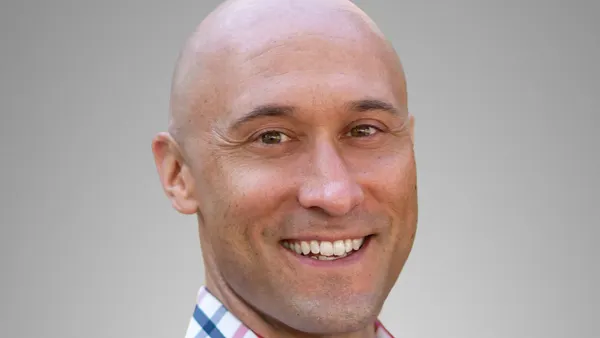Dive Brief:
- Hillrom has announced plans to acquire Bardy Diagnostics in a move that will add a wearable biosensor-based monitoring platform to its portfolio of cardiology devices.
- The definitive agreement to buy BardyDx announced Tuesday includes $375 million in cash plus potential future payments based on achieving certain commercial milestones. It is also acquiring net operating losses valued at more than $20 million expected to generate future tax benefits, Hillrom said.
- Analysts contend the deal positions Hillrom, known for its hospital beds, ventilators and other patient care equipment, to take advantage of the growing trend in devices that enable connected care, particularly ambulatory cardiac monitoring. However, one analyst expressed concerns about Medicare reimbursement.
Dive Insight:
Medical devices are increasingly being developed to connect to the internet, providing benefits such as the ability to measure clinical outcomes and perform remote diagnostics. Needham & Co. analysts have suggested that the healthcare sector's shift toward value-based care should drive greater adoption of connected devices by facilitating the collection of data for measuring the cost effectiveness of treatments.
Medtechs with a focus on connected care range from sleep apnea device maker ResMed to pulse oximetry specialist Masimo. In the cardiac monitoring space, competitors of BardyDx include iRhythm Technologies and BioTelemetry, which Philips last month announced plans to acquire for $2.8 billion.
Chicago-based Hillrom said acquiring BardyDx, with annual revenue of about $30 million, supports its goal of advancing connected care, while providing a higher-growth revenue stream with a product that complements its current cardiology offerings. Its Carnation ambulatory monitoring (CAM) patch joins Hillrom's portfolio of cardiac stress testing systems, Holter monitors to detect irregular heart rhythms, and resting electrocardiography (ECG) devices.
The CAM patch is designed to help physicians identify specific arrhythmias and uses advanced algorithms to process the ECG signal, ensuring P-wave recording and accuracy, according to Hillrom. The P-wave is historically the most difficult part of the signal to monitor, the Needham analysts noted. The patch is worn for 14 days, compared to the one or two days typical of traditional Holter monitors.
Needham said the deal makes strategic sense. "Extended Holter monitors are more innovative than the legacy traditional Holter monitors in our view, and we believe they could contribute to (Hillrom's) organic growth over the next few years," the analysts said in a note to clients after the acquisition was announced.
Hillrom said its own global brand and presence in acute and primary settings, combined with its capabilities in payer contracting, data security and electronic medical record integration, should accelerate the adoption of the CAM patch and related suite of ECG analysis services and tools.
The company expects the deal to be dilutive to its fiscal 2021 adjusted earnings by about 10 cents per share, but does not expect an impact on its previously issued financial guidance. The transaction is expected to be increasingly accretive after the first year, and generate a 10% return on invested capital by year five.
Baird analysts said they see revenue synergy opportunities for Hillrom from the deal but expressed concerns about Medicare reimbursement of cardiac monitoring. In December, CMS did not finalize national pricing for extended versions of cardiac monitoring devices in its 2021 Physician Fee Schedule.
"We did not read the press release and initially think 'home run' transaction all things considered; certainly it continues to shift Hillrom’s portfolio toward higher-growth categories but this specific bite comes with significant upfront cost. Execution on the integration will therefore need to be crisp to make this math work," Baird analysts wrote in a note to clients.
The acquisition is expected to close in the second quarter.












